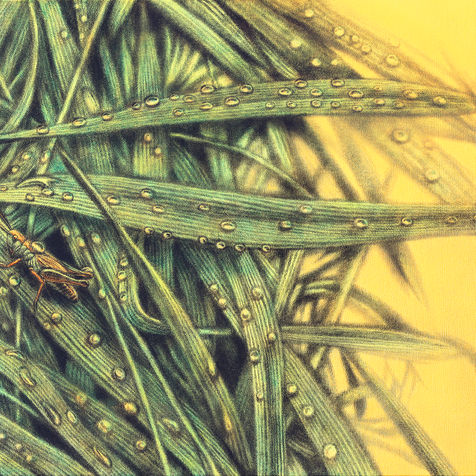
Japanese sumi ink & acrylic
Japanesque
Japanese traditional art began to cause ripples in the West at its first international Expo participation in Paris in the mid-19th century. At this time, the fact that the wrapping paper used to package exhibits for delivery featured ukiyo-e prints created a "boom" for all things Japanese among the contemporary new wave (to some, heretical) French impressionists. Interestingly, this ultimately led to the wave of "Japonism", which spread throughout Western Europe.
As a Japanese artist living in the UK, I feel a constant longing, passion and love for all things Japanese. This is a different emotion from the admiration felt by Japanese people for Western culture. It seems to me that Western art has always been based on a meta-narrative and has always tried to reinvent itself in order to move forward from the current meta-narrative. As a result, modern art, as it has emerged in the West, has become a highly theoretical practice. In comparison, traditional Japanese art has been created in a unique environment (even though it takes significant influence from China). Japan lived through 700 years of the rule of the sword, which includes 200 or more years of complete closure to the outside world, during which it prospered. Perhaps this unique history explains why Japanese art has established its own style, focusing on surface beauty as if picking up the essence of historical drama, landscapes and natural beauty as its motifs, by avoiding the speculative aspects of thought and philosophy. These things are indescribably beautiful, and also frail. Their beauty, in fact, is closely linked to the Western philosophy and historical artistic concept of "memento mori" (remember your mortality). In the very concept of Japanese art, we can find the key to how humans see.
Among all creatures endowed with the faculty of sight, it is only humankind that possesses the singular awareness that the act of seeing is performed by the self. This self-reflective gaze does not indiscriminately absorb the world; rather, it selects—consciously, longingly—what it wishes to behold. Be it an epoch, a landscape, or the quiet splendour of nature, the object of vision becomes a mirror of desire, transfigured through symbol and style into the realm of visual art. It is this very process, I believe, that lies at the heart of traditional Japanese aesthetics. Its distilled elegance—minimal yet profound—was, perhaps, the very essence that stirred the imagination of the West in the nineteenth century. In its lineage, one finds the flourishing of post-war Japanese culture, where manga and anime have emerged not merely as popular forms but as a cultural force of global magnitude. These forms have absorbed the methodologies of Western art—perspective, colour theory, and the like, whose origins reach back to the Renaissance and even to the threshold of Greek civilisation—yet they have given rise to an entirely new artistic cosmology. And so, while I remain attentive to these unfolding currents, my gaze returns to the wellspring of Japanese tradition. In homage and inquiry, I seek to situate the Japanesque—not as nostalgia, but as a living question posed to contemporary art and its future.































